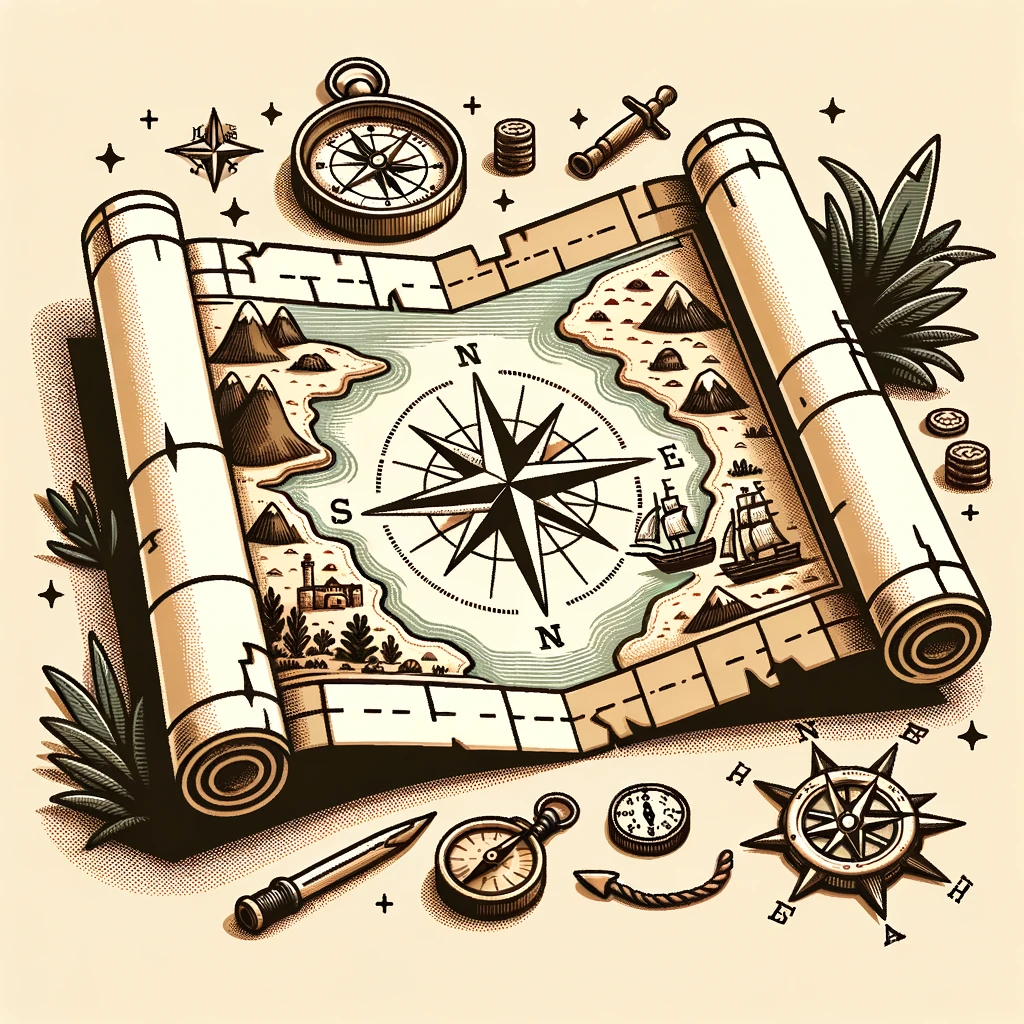The Quest for Clean and Sustainable Waters
Water is the lifeblood of our planet. It is an essential element for every form of life, from the tiniest microorganism to the largest mammal. However, unlike other natural resources such as air or sunlight, water is finite. The quest for **clean and sustainable waters** has become one of the most pressing challenges of the 21st century. As the global population surges and industrial activities expand, ensuring that clean water remains available for future generations is essential.
Current Challenges in Water Supply
According to the United Nations, by 2025, approximately 1.8 billion people will live in areas plagued by water scarcity. Several factors contribute to this daunting forecast:
Pollution: Contamination from industrial waste, agricultural runoff, and sewage has severely degraded water quality in many parts of the world.
Overconsumption: In many regions, water is being used at a faster rate than it can be replenished, draining rivers and aquifers.
Climate Change: As global temperatures rise, weather patterns become more unpredictable, leading to severe droughts in some areas and devastating floods in others.
Impact on the Environment and Society
The effects of water scarcity and pollution are far-reaching and manifest in various ways:
Ecosystems: Lakes, rivers, and wetlands are critical habitats for countless species, and their degradation leads to biodiversity loss.
Economies: Water-intensive industries, such as agriculture and energy, face severe setbacks, impacting global markets and food security.
Health: Contaminated water becomes a breeding ground for diseases such as cholera and dysentery, posing grave health risks to millions.
Innovative Solutions and Technologies
Efforts to combat water issues have led to innovative solutions aimed at making water usage more sustainable and efficient. The following approaches offer promising strategies for addressing the global water crisis:
Desalination: Technology to convert saltwater into potable water using processes like reverse osmosis has seen unprecedented advancements.
Water Recycling: Treating and reusing wastewater for agricultural and industrial applications lessens dependence on freshwater sources.
Rainwater Harvesting: Capturing and storing rainwater for future use is an age-old technique that is seeing renewed interest globally.
Chart showing the efficiency and cost-effectiveness of modern desalination techniques across various countries.
Efforts by Global Organizations
International collaboration is critical. Organizations like the **World Health Organization (WHO)** and the **United Nations Water Initiative** are at the forefront of promoting sustainable water management. Their efforts include:
Funding research into new water technologies.
Providing support to regions affected by severe water crises.
Establishing frameworks for conservation and sustainable usage.
The Importance of Individual Responsibility
While technological advancements and global policies play an essential role, individual actions also escalate the quest for sustainable water use. Small changes in daily habits can make a significant impact:
Turning off taps while brushing teeth or washing dishes.
Installing water-efficient fixtures in homes.
Supporting brands and products that prioritize water conservation.
Each drop conserved today represents a step toward a more sustainable tomorrow.
Transitioning from understanding water challenges to adopting actionable steps is essential for ensuring long-term water availability. Policy frameworks need alignment with technological innovations to maximize impact. As we delve into …
Ongoing Efforts in Water Sustainability
As the global community turns its focus on sustainable water management, innovative solutions and concerted efforts have been at the forefront. This has been a critical aspect in the **preservation of water resources** for future generations.
Prominent Technologies Redefining Water Management
The modernization of sustainable water initiatives has seen a plethora of technologies coming to the fore. **Desalination, water recycling, and smart irrigation** are some of the remarkable technologies currently setting new benchmarks.
Desalination: This process of removing salt from seawater has seen advancements, making it a **viable solution** for arid regions craving for fresh water.
Water Recycling: Converting wastewater into reusable water, this technology supports agricultural and industrial processes while diminishing the overall water footprint.
Smart Irrigation: Utilizing IoT sensors and AI, this method maximizes water efficiency, directly combating water wastage.
Policy Frameworks Propelling Change
Governments around the world have started to implement robust policies and regulations to ensure sustainable water management. Initiatives such as the **”Blue Flag Program”** and the **”International Water Act”** aim to elevate standards and practices in conserving water ecosystems.
Efficiency of water legislation across various countries
Strengthening Community Initiatives
Equipping communities with the right tools and knowledge forms the backbone of actualizing sustainable water practices. Educational programs and localized initiatives have been instrumental in fostering a culture of **water conservation**.
“Empowering individuals at the grassroots level is perhaps the most potent way to ensure long-term, sustainable water use.”
Charting the Course for Future Water Strategies
Looking ahead, the emphasis on **collaborative research**, **international partnerships**, and a **paradigm shift** towards circular water economies is necessary. Breakthroughs in nanotechnology and hybrid water systems promise an era where water scarcity could become a narrative of the past.
The Role of Technology in Achieving Clean and Sustainable Water
As we continue our journey toward sustainable water solutions, it’s evident that **technology** plays a pivotal role in addressing the challenges we face. From **modern filtration systems** to **advanced water monitoring**, innovative technologies are being developed and deployed to ensure a cleaner and more sustainable water future.
Innovative Water Filtration Systems
One of the most significant advancements in the quest for clean water is the development of state-of-the-art **water filtration technologies**. These systems utilize **nanotechnology**, **membrane filtration**, and **biological processes** to remove contaminants and provide safe drinking water. By improving the efficiency and affordability of these technologies, we can make clean water more accessible to underserved communities.
**Nanotechnology** in Filtration: Allows for the removal of microscopic pollutants that traditional methods might miss, ensuring higher water purity.
**Membrane Filtration**: A highly effective method for removing particulates from water, reducing the burden on other filtration processes.
**Biological Processes**: Leveraging natural biotic components to break down pollutants can create more environmentally friendly and cost-effective solutions.
Water Monitoring and Data Analysis
Another crucial aspect of sustainable water solutions is the real-time monitoring of water bodies and supply systems. Improved **sensor technologies** and **data analytics** tools provide accurate insights into water quality, consumption patterns, and potential leaks. This data can be used to implement more targeted conservation efforts and pollution control strategies.
**Sensors**: Advanced sensors can detect everything from chemical pollutants to biological threats in real-time.
**Data Analytics**: Using big data analytics, we can predict water usage trends and detect anomalies that could indicate leaks or contamination.
Community Involvement and Policy Implementation
While technology provides the tools necessary for change, **community involvement** and effective **policy implementation** drive the movement toward sustainable water usage. It’s essential that communities are engaged through education programs and policy incentives to foster a conservation mindset and encourage efficient water use practices.
Role of Community
Community-based initiatives can be instrumental in spreading awareness and promoting practices that preserve water resources. Collaborative efforts that empower local populations can lead to significant shifts in water conservation habits.
Policy Initiatives
Governments play a critical role by enacting legislation that enforces water conservation measures, supports innovation, and funds critical infrastructure projects. Policies that incentivize sustainable practices can encourage businesses and individuals to adopt water-saving technologies and habits.
**Incentive Programs**: Tax breaks or subsidies for industries and homeowners who utilize approved water-saving technologies.
**Educational Campaigns**: Government- and community-led programs aimed at renewing focus on the importance of water conservation.
**Legislation**: Implementing laws that protect water resources and impose penalties for pollution.
Conclusion
The interplay of modern technology, engaged communities, and effective policy is fundamental for achieving clean and sustainable water sources. By embracing technological innovations, encouraging public involvement, and reinforcing policies, we can collectively work toward mitigating water-related challenges and ensure a sustainable future.
List of Action Items
**Promote the adoption of advanced filtration technologies** in underserved regions.
**Integrate comprehensive water monitoring systems** across major water bodies and infrastructures.
**Foster community engagement programs** to raise awareness and empower local actions for water conservation.
**Support policy frameworks** that incentivize sustainability and penalize pollutants and water wastage.
**Collaborative efforts between governments, NGOs, and private sectors** to fund and innovate sustainable water projects.
Projected Impact of Water Technologies on Sustainability


 Afrikaans
Afrikaans Shqip
Shqip አማርኛ
አማርኛ العربية
العربية Հայերեն
Հայերեն Azərbaycan dili
Azərbaycan dili Euskara
Euskara Беларуская мова
Беларуская мова বাংলা
বাংলা Bosanski
Bosanski Български
Български Català
Català Cebuano
Cebuano Chichewa
Chichewa 简体中文
简体中文 繁體中文
繁體中文 Corsu
Corsu Hrvatski
Hrvatski Čeština
Čeština Dansk
Dansk Nederlands
Nederlands English
English Esperanto
Esperanto Eesti
Eesti Filipino
Filipino Suomi
Suomi Français
Français Frysk
Frysk Galego
Galego ქართული
ქართული Deutsch
Deutsch Ελληνικά
Ελληνικά ગુજરાતી
ગુજરાતી Kreyol ayisyen
Kreyol ayisyen Harshen Hausa
Harshen Hausa Ōlelo Hawaiʻi
Ōlelo Hawaiʻi עִבְרִית
עִבְרִית हिन्दी
हिन्दी Hmong
Hmong Magyar
Magyar Íslenska
Íslenska Igbo
Igbo Bahasa Indonesia
Bahasa Indonesia Gaeilge
Gaeilge Italiano
Italiano 日本語
日本語 Basa Jawa
Basa Jawa ಕನ್ನಡ
ಕನ್ನಡ Қазақ тілі
Қазақ тілі ភាសាខ្មែរ
ភាសាខ្មែរ 한국어
한국어 كوردی
كوردی Кыргызча
Кыргызча ພາສາລາວ
ພາສາລາວ Latin
Latin Latviešu valoda
Latviešu valoda Lietuvių kalba
Lietuvių kalba Lëtzebuergesch
Lëtzebuergesch Македонски јазик
Македонски јазик Malagasy
Malagasy Bahasa Melayu
Bahasa Melayu മലയാളം
മലയാളം Maltese
Maltese Te Reo Māori
Te Reo Māori मराठी
मराठी Монгол
Монгол ဗမာစာ
ဗမာစာ नेपाली
नेपाली Norsk bokmål
Norsk bokmål پښتو
پښتو فارسی
فارسی Polski
Polski Português
Português ਪੰਜਾਬੀ
ਪੰਜਾਬੀ Română
Română Русский
Русский Samoan
Samoan Gàidhlig
Gàidhlig Српски језик
Српски језик Sesotho
Sesotho Shona
Shona سنڌي
سنڌي සිංහල
සිංහල Slovenčina
Slovenčina Slovenščina
Slovenščina Afsoomaali
Afsoomaali Español
Español Basa Sunda
Basa Sunda Kiswahili
Kiswahili Svenska
Svenska Тоҷикӣ
Тоҷикӣ தமிழ்
தமிழ் తెలుగు
తెలుగు ไทย
ไทย Türkçe
Türkçe Українська
Українська اردو
اردو O‘zbekcha
O‘zbekcha Tiếng Việt
Tiếng Việt Cymraeg
Cymraeg isiXhosa
isiXhosa יידיש
יידיש Yorùbá
Yorùbá Zulu
Zulu

